|
|
Select Aquatics of Erie, CO |
|
|
|
Breeding the Puntius padamya "Odessa" Introduction
|
|
|
|
|
|
|
|
|
|
Introduction:
* Page 1: Odessa Barbs, Origins of the Odessa Barb Page 2: Overview of Breeding the Puntius padamya Page 3: Step by Step Specifics of How We Breed Them Here |
|
|
|
|
|
|
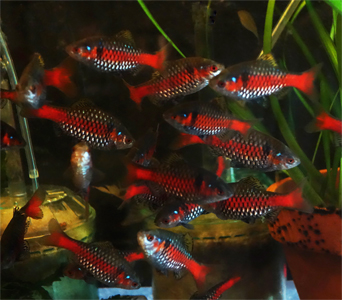
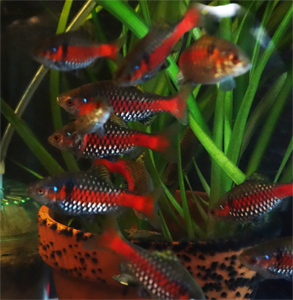
|
|
|
|
* I will use Photoshop to clean up a photo, but there is no enhancement of the red in any pictures of the Odessas- They really are that red! |
|
|
|
The practices described in these next pages
will work well for most any danios, barbs and some tetras you may wish
to spawn,
Often the broad needs are mentioned- this is how we meet those needs.
This essay is strictly on the Puntius padamya, one of a
Once those issues are met, this method can be used. Manipulation of
light can also be used to trigger spawning in some species, |
|
|
|
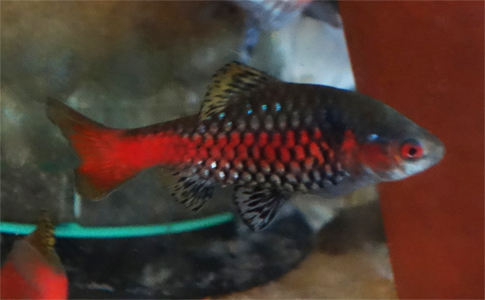
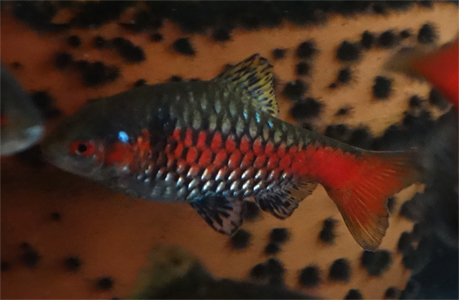
|
|
|
|
Since 2006, through numerous breeding cycles, the best fish were
isolated and used as breeders to selectively breed |
|
|
|
Breeding the Odessa Barbs is not difficult, in that they are a fish that when ready to spawn will do so pretty consistently, and predictably. This fish is considered one of the fastest swimming fish you can keep in the home aquarium, with an intensity of color that rivals salt water fish. Any need for a water change, or improvement in their environment is often made clear as their color will dull or become washed out. Their color is best with good oxygenation and some water movement, low to moderate light conditions, plants for security, and surrounding color is slightly subdued. A group of the healthiest males will look like very unhappy fish if put into a brightly lit tank with, say, white gravel, no place to hide for security, etc. Like most egg scatterers, they will eat their eggs and the eggs of other females spawning nearby. The young are nearly microscopic, at the size of the smallest rainbow or killiefish fry. The challenge is simply maintaining consistent, adequate water quality, through carefully maintaining a balance between the food going in, the young's increasing water quality needs as they grow and produce more waste, and your efforts to maintain water quality with 3-4x per day water changes during their first month. The fry are large enough to be handled with a net at 30 days, and must be divided up into grow out tanks at that time, as the number of fry will overwhelm a 29 gallon tank. |
|
|
|
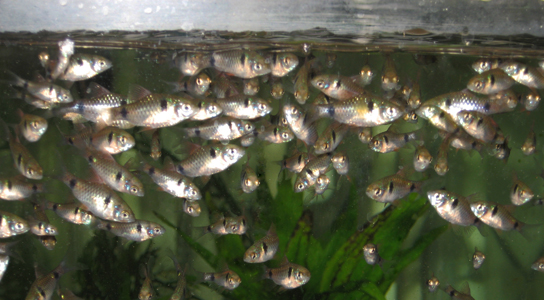
|
|
|
|
A group of 3 month old unsexed, uncolored, young. Males and females are nearly identical. |
|
|
|
The specifics of breeding them in a home aquarium is
by necessity more difficult than what commercial breeders do to
breed them, who use large ponds, and net out fish on a regular basis. The process of breeding them in larger numbers in a home fishroom may seem involved, but within the confine of a glass aquarium, you must maintain control of the breeding process, feeding and water quality. You can also visually inspect every fish to pull those that do not reflect the line you are developing, as well as select the absolute best fish as breeders. HOWEVER, they are extremely hard to catch, and going for a specific fish in a group of these guys with a 4 or 6 inch net really is impossible.
THEN, once they know what you are up to, and get spooked, they all wash
out of color, and any hope to find the fish you wanted is lost.
|
|
|
|
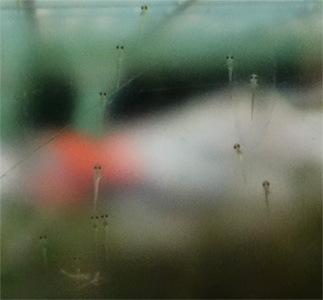
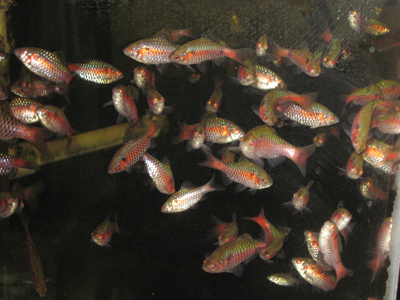
|
|
|
|
Odessa fry just a few hours old. Young males beginning to color out at 6-7 months. |
|
|
|
Incredibly beautiful male odessas were
available fairly consistently in the pet trade until about 7-10 years
ago. The Odessa barb is not Recently a wholesaler
contacted me, as he heard I had this line of the Odessas. He was very
interested in obtaining them, and he |
|
|
|
Origins |
|
|
|
||